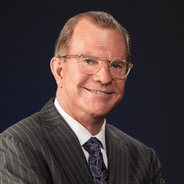8 minutes
Enhancing your ability to think strategically isn’t hard to do.
You woke up this morning in the future. You probably didn’t think much about it because human nature, as is most business nature, is to focus on the here and now—the near term. And when our lives and business issues are urgent, that’s the best approach.
However, most of our credit union board work is not urgent; it’s performance oversight. We spend a lot of time looking in the rear-view mirror. The reality is that unless your credit union is underperforming, you need less dialogue about performance and more dialogue what the future holds. Keeping in sync with the future—members’ interests, technology, recruiting younger members—is the biggest risk most credit unions face.
Think about this observation and apply it to your board service: “Most board members know more about the financial health of their credit union than they do about the strategic plan and options facing them for the future.” That’s because credit unions in general are well-run businesses and don’t have to worry about too much.
You’re Not a Volunteer, You’re a Trustee of the Credit Union’s Future
It’s time to be less of a volunteer and more of a trustee. Fiduciary responsibility for financial performance trumps most of our board attention; however, a board is also responsible for the credit union’s strategic domain. Contemporary boards act as a strategic partner with the executive team to keep the enterprise valuable and vibrant for members.
Are we keeping up with current standards in banking? Are we meeting challenges from our competitors? What are we learning and adopting from the innovators and disruptors who are rapidly changing banking? In short, today’s board member must be part overseer and part futurist.
The average person thinks being a futurist is a professional occupation and not in their sphere of endeavor or competency. While professional futurists make a living providing great insight into an uncertain future, the average person can also think more like a futurist. I advise all board members to learn to enhance their futuring mindset—and with, some simple adaptation of their board behavior it’s not hard to do.
What Do Futurists Do That the Average Person Can Also Do?
- They are intellectually curious and read broadly to see trends and interaction amongst the economy, politics and social changes.
- They track opinion and thought leaders, in this case in financial services, who make it their job to create future scenarios for the industry.
- They closely follow major trends of the industry leaders to determine possibilities and relevance to their own enterprise.
- They look for possibilities rather than certainties by asking the question: “If this is a major trend, how might it impact our choices?”
- They stay in a future-facing rhythm, discussing possibilities incessantly—not just once or twice a year.
- They are not afraid to examine scary trends and disruptions for relevance.
- They make consideration of future strategy a regular commitment not just a once-a-year event or something to undertake when there’s a market surprise.
Two Planning Retreats a Year
In today’s fast-moving business environment, strategic topics and a scan of other trends, developments and innovations in financial services deserve more than a once-a-year retreat. You are at risk if your misread or miss opportunities or if you are too slow to respond. Speed is a strategic advantage in our current environment, and maintaining a strategic rhythm helps you stay focused on acting with dispatch. If your credit union is over a billion in assets, you most likely have two planning retreats a year. That’s the type of investment we all need regardless of size.
How do you evolve your planning retreat away from a boring leftover review and rehash of last year’s plan into a more lively and impactful session? Early in the year, spend a day reviewing trends in financial services and in business. Have board members read articles, check banking innovation sources and review banking futurists thinking, then come together for a discussion of implications, not for a PowerPoint marathon. Have everyone do the background reading in advance so you can invest more time in dialogue and discussion. It’s can also be important to have an outside facilitator help the group stay focused and to ensure balanced input and examination of diverse thinking.
In the second half of the year, have your typical planning retreat with the goal of narrowing the strategic possibilities, identifying some goals and creating a plan architecture. It’s OK to have this be roughly right while you take a couple more months of research, numbers crunching and validating to make sure you’re on the right track.
The old expectation that we leave the planning session with a firm plan is just that … an old expectation and still unreal. Actually, most executive teams prefer to leave the retreat with the gist of the priorities from the board and then get a chance to put some real executive elbow grease into the specifics.
Spending 70% of Meeting Time on Strategy Maintains Your Strategic Rhythm
Futurists spend more time looking at and discussing a changing future than most other professionals. Your board can generate more futuristic thinking—and make your meetings more exciting—by dedicating more time in each meeting to discussions of strategic issues. I suggest 70%of your regular agenda dedicated to future-facing issues. However, reaching 50% of your agenda being on strategy is adequate. There are essentially only two domains of a board meeting agenda: (1) fiduciary oversight and discussion and (2) strategic thinking and follow-up. I’ve found in my work with more than 400 boards that the fiduciary work for most credit unions can be done in 30 to 45 minutes, leaving significant time for strategy consideration.
What are examples of the types of topics Credit Unions are examining in the “strategic” portion of the agenda?
- Digital strategy/fintech/cybersecurity
- Desired organizational culture
- Shifting demographics and younger member recruitment
- Governance best practices
- Board makeup
- Deepening member relationships—“stickiness”
- Mergers and acquisitions (including community banks)
- Business services; insurance offerings; small-business coaching
- Increasing lending volume
- Environmental, social and governance commitment and branding
- Tracking metrics and progress on strategic goals/course correction
- Deeper examination of “disruptive” banking
- Credit union service organizations for diversification of income
Refreshing Your Future-Facing Posture
You might have a board discussion to set a common expectation that board members will stay current using basic resources. Here is a sample of a few you might consider.
- KPMG Connected Banking
- McKinsey and Company Financial Services
- LinkedIn.com (Fintech and Banking Innovation group)
- AmericanBanker.com
- BrettKing.com
- bankautomationnews.com
- Accenture banking blog
Many of these resources email periodic notes on their thinking, what’s happening with innovation, disruptions they are tracking and other good information. Usually you can get on the mailing list or check in periodically with the web site.
Not every board member needs to follow every resource. A board may choose to divvy up responsibility with the expectation that what they learn and see gets reported back for the entire board to hear. Remember you have time at each meeting for quickly hearing and considering what you’ve learned. Then you can set a deeper examination at the next meeting or the first retreat.
Great board members make a personal commitment to track futurists’ thinking in general.
Some highly respected futurists to track are:
- Thomas Frye;
- Michael Rodgers;
- Amy Webb (https://futuretodayinstitute.com);
- Erica Orange et.al (https://thefuturehunters.com)
Remember that futurists stay attuned to what’s going on in the world at different levels of commitment. The professional futurist scans globally for trends and disruptions and conducts deeper tracking and examination. The everyday futurist at least keeps informed of what’s going on. For the latter, I recommend board trustees read the following on a regular basis:
- The Economist (global current events and provocative commentary
- Fast Company (best tracker of innovations and disruptive trends around)
- USA Today (current events and fresh disruptions to society and business)
- The Wall Street Journal (business and financial behavior tracked and reported)
Individual board members can also benefit from finding fresh publications on governance and strategy and attending conferences (in person or streamed). Here are three books that people are reading now: Governance in the Digital Age by Brian Stafford and Dottie Schindlinger (2019); Ten Lessons for a Post-Pandemic World, Fareed Zakaria (2020); and Strategic Impact, Carol Poore (2020).
Certainly attending any of the multitude of CUES conferences—now resuming face to face—will help you keep current. However, don’t overlook “banking” conferences in general. You will find a different population and much innovative exploration that will be helpful to you own strategic thinking about the future.
We Are Creating the Future Now!
Businesses generate value by looking into the future and creating products and services that continue to meet, in real time, the advances in their domain and the needs, demands and interests of their customers. Boards can learn a lot from the futurists community about how to remain alert, act as fast as risk will allow, and ensure they remain valuable to their constituency. I propose this doesn’t take burdensome effort, is a board member’s responsibility, and provides an added intellectual and emotional satisfaction to board service. See you in the future!
Les Wallace, Ph.D., is president of Signature Resources in Aurora, Colorado, and a frequent CUES speaker and content provider. Wallace served on the board of the World Future Society, the preeminent international organization dedicated to the practice and promotion of futuristic thinking. His book Principles of 21 Century Governance is used by many boards of directors as a playbook for good governance.






